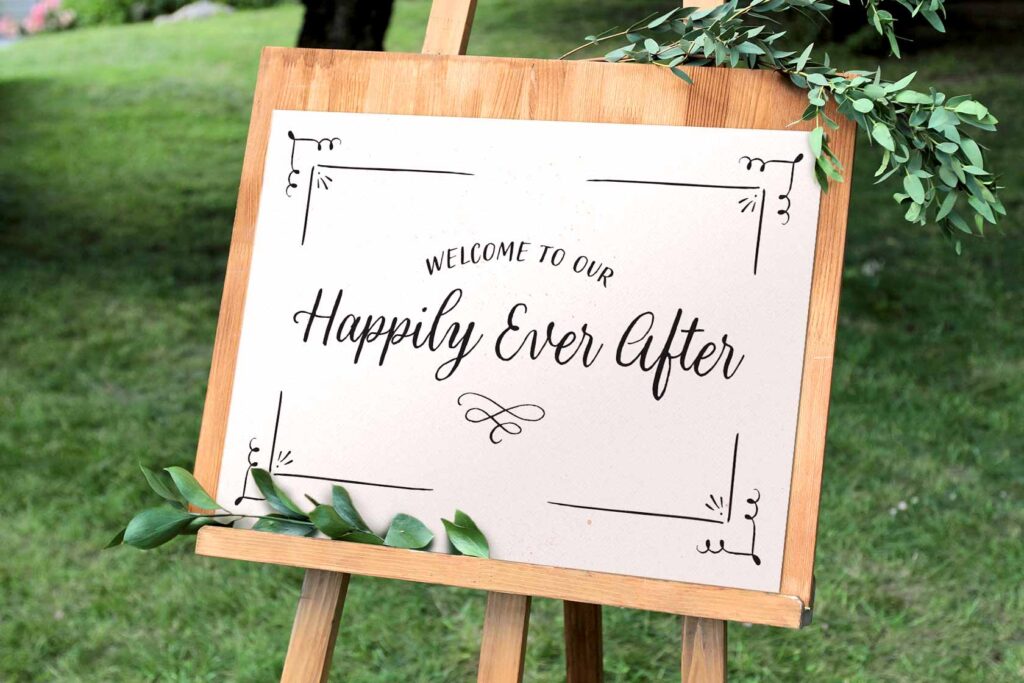Introduction to Welcome Sign
A welcome sign serves as a crucial element in setting the tone for any event, whether it’s a wedding, a birthday party, or simply welcoming guests into your home. It creates an immediate sense of warmth and hospitality, making visitors feel valued and appreciated from the moment they arrive. Welcome sign is a decorative piece of signage that greets guests as they arrive at a venue. Typically displayed at the entrance, these signs can feature messages like “Welcome,” the names of the hosts, and the date of the event.
The Significance of Welcome Signs
- First Impressions Matter: A well-designed welcome sign is often the first thing guests see. It sets the mood for the event and creates a lasting impression.
- Guidance and Direction: In larger venues, a welcome sign can help guests navigate their way, ensuring they know they are in the right place.
- Personalization: A welcome sign allows hosts to express their personality and style, making the event feel more intimate and personal.
- Memorable Keepsake: After the event, many hosts choose to keep their welcome signs as mementos, reminding them of the special day.
Types of Welcome Signs
1. Wedding Welcome Signs
Wedding welcome signs are particularly popular, as they greet guests at the beginning of the celebration. These signs can be elegant, rustic, or whimsical, depending on the couple’s style. Common materials include:
- Acrylic: Choose clear or frosted acrylic signs to add a modern touch, and paint them on the back to match your wedding colors.
- Wood: Opt for wooden signs to bring rustic charm, and stain or paint them to fit your theme.
- Chalkboard: Use chalkboard signs for versatility, as you can easily update them with different messages.
- Mirror: Select mirrors for an elegant option, and enjoy reusing them in your home after the wedding.
2. Home Welcome Signs
Home welcome signs are perfect for creating a warm atmosphere for visitors. They can be displayed near the front door or in the entryway. Popular styles include:
- Personalized Signs: Featuring the family name or a welcoming message, these signs can be customized to reflect the homeowner’s personality.
- Seasonal Signs: Changing welcome signs with the seasons or holidays can keep the home feeling fresh and inviting.
- Humorous Signs: Funny welcome signs can add a lighthearted touch to the entrance, making guests smile as they arrive.
3. Event-Specific Welcome Signs
For parties, corporate events, or community gatherings, welcome signs can be tailored to fit the occasion. Considerations include:
- Themed Designs: Use colors and graphics that align with the event theme.
- Informational Content: Include details like the event schedule, special instructions, or a brief welcome message.
Designing Your Welcome Sign
Choosing the Right Material
The material you choose for your welcome sign can impact its appearance and durability. Here are some popular options:
- Wood: Offers a natural look and can be painted or stained.
- Acrylic: Provides a sleek, modern appearance and is weather-resistant.
- Chalkboard: Allows for easy customization and can be reused for different events.
- Fabric: Lightweight and portable, fabric signs can be printed with vibrant colors and designs.
Size and Placement
The size of your welcome sign should be appropriate for the space where it will be displayed. Here are some guidelines:
- Large Venues: Opt for larger signs (24×36 inches or bigger) to ensure visibility from a distance.
- Smaller Spaces: If you’re hosting an intimate gathering, use smaller signs (18×24 inches) and place them on tables or easels.
- Placement: Position your sign where it will be easily seen as guests arrive, such as near the entrance or on a welcome table.
Crafting the Message
The message on your welcome sign should be clear and inviting. Here are some ideas:
- Traditional: “Welcome to Our Wedding” or “Welcome to Our Home”
- Personalized: Include the names of the hosts or a special date.
- Creative Phrases: Use a quote or phrase that reflects the theme of the event, such as “The Beginning of Our Forever” for weddings.
DIY Welcome Sign Ideas
Creating a DIY welcome sign can be a fun and rewarding project. Here’s a step-by-step guide to help you get started:
Step 1: Gather Materials
Depending on the design, you may need:
- A wooden board or canvas
- Paint or stain
- Vinyl lettering or stencils
- Brushes or sponges
- Easel (if desired)
Step 2: Design Your Sign
Sketch out your design on paper. Consider the colors, fonts, and layout you want to use.
Step 3: Prepare the Base
If using wood, sand the surface to ensure a smooth finish. Apply a base coat of paint or stain and let it dry.
Step 4: Add Your Message
Using vinyl lettering or stencils, apply your message to the sign.
Step 5: Finishing Touches
Add any additional decorations, such as flowers or embellishments, to enhance the overall look.
Step 6: Display Your Sign
Choose a prominent location for your sign, making sure it’s visible to all guests.
Conclusion
A welcome sign is more than just a decorative piece; it’s a heartfelt gesture that sets the tone for any event. Whether you choose to create a DIY sign or purchase one, the right welcome sign can enhance the atmosphere and make your guests feel truly valued. By understanding the various types, materials, and design options available, you can create a sign that perfectly complements your occasion and leaves a lasting impression on all who visit.
FAQs
What should I include on a welcome sign?
Include a warm greeting, the names of the hosts, the date of the event, and any special messages or instructions.
How can I personalize my welcome sign?
You can personalize your sign by using unique colors, fonts, and messages that reflect your personality or the theme of the event.
Where should I place my welcome sign?
Can I reuse my welcome sign after the event?
What materials are best for outdoor welcome signs?
For outdoor signs, consider using weather-resistant materials like acrylic or treated wood to ensure durability.












